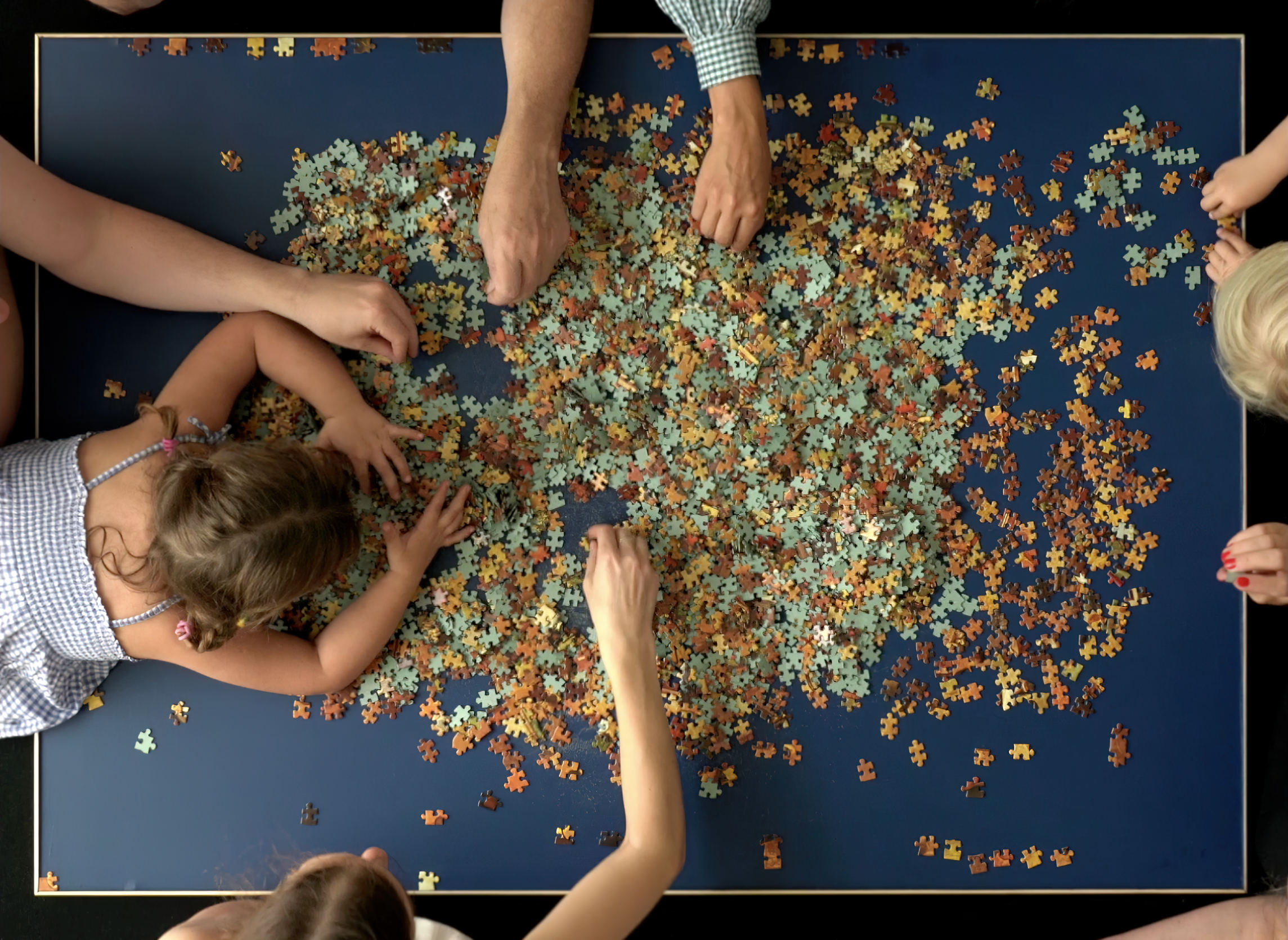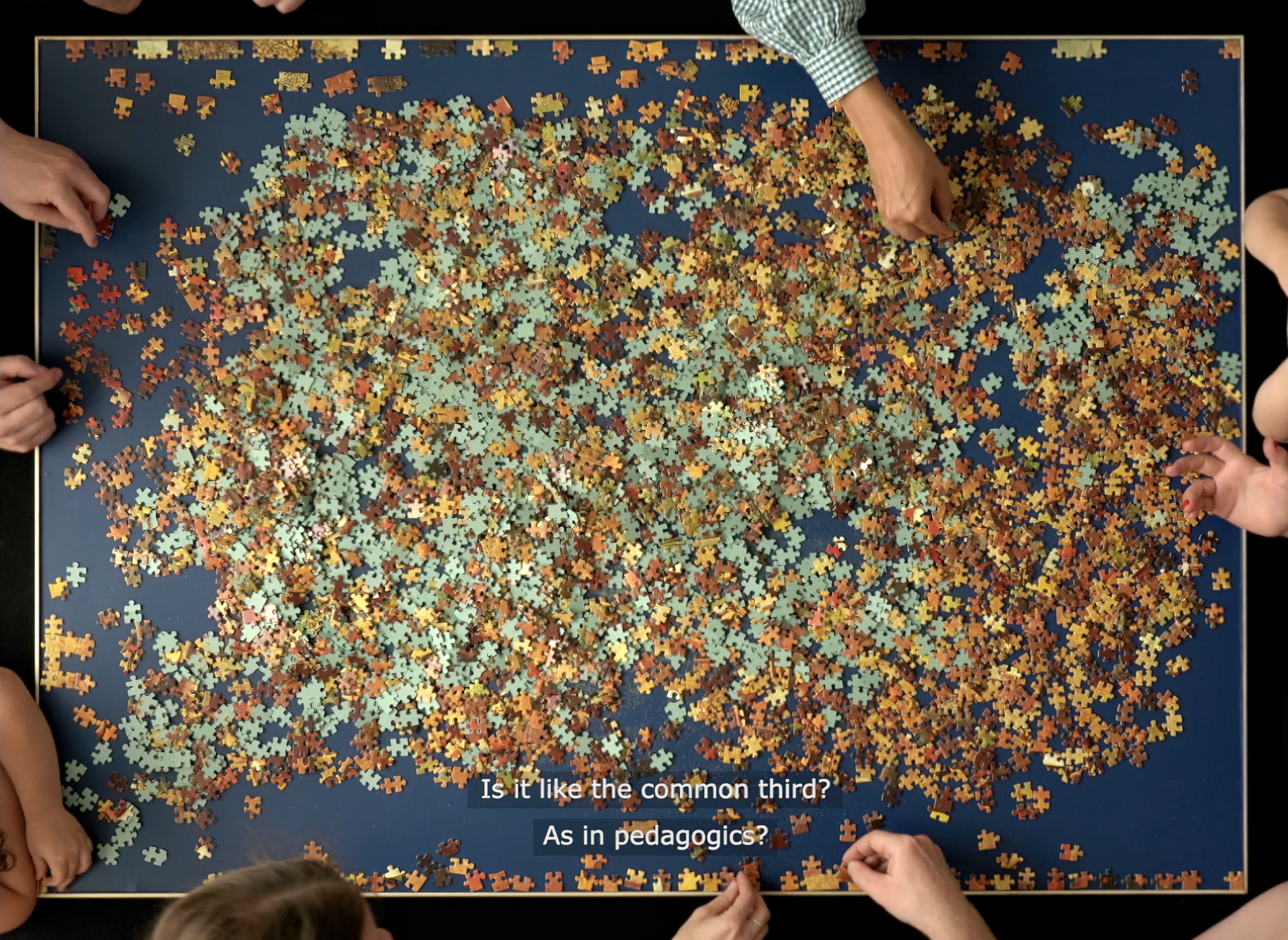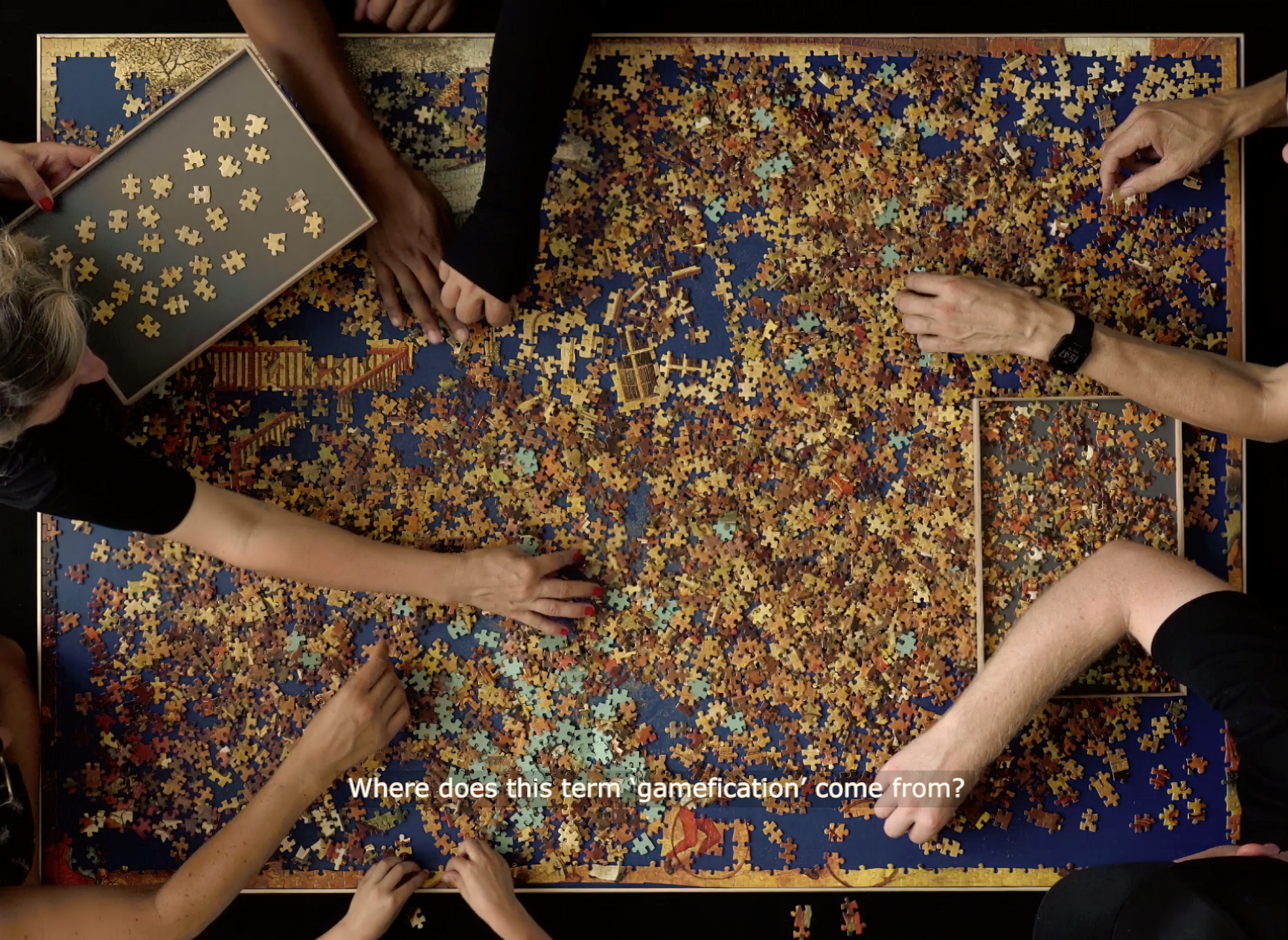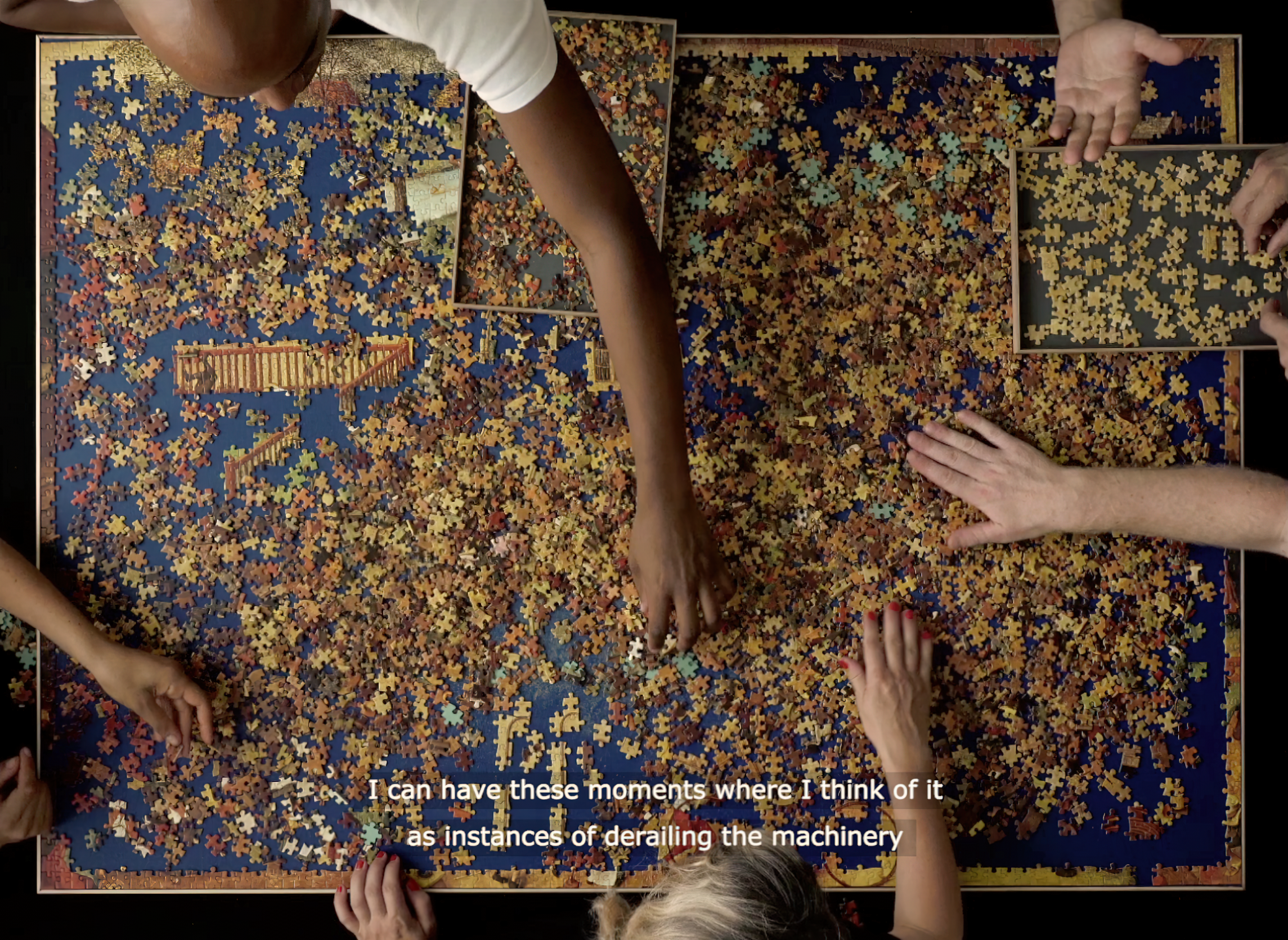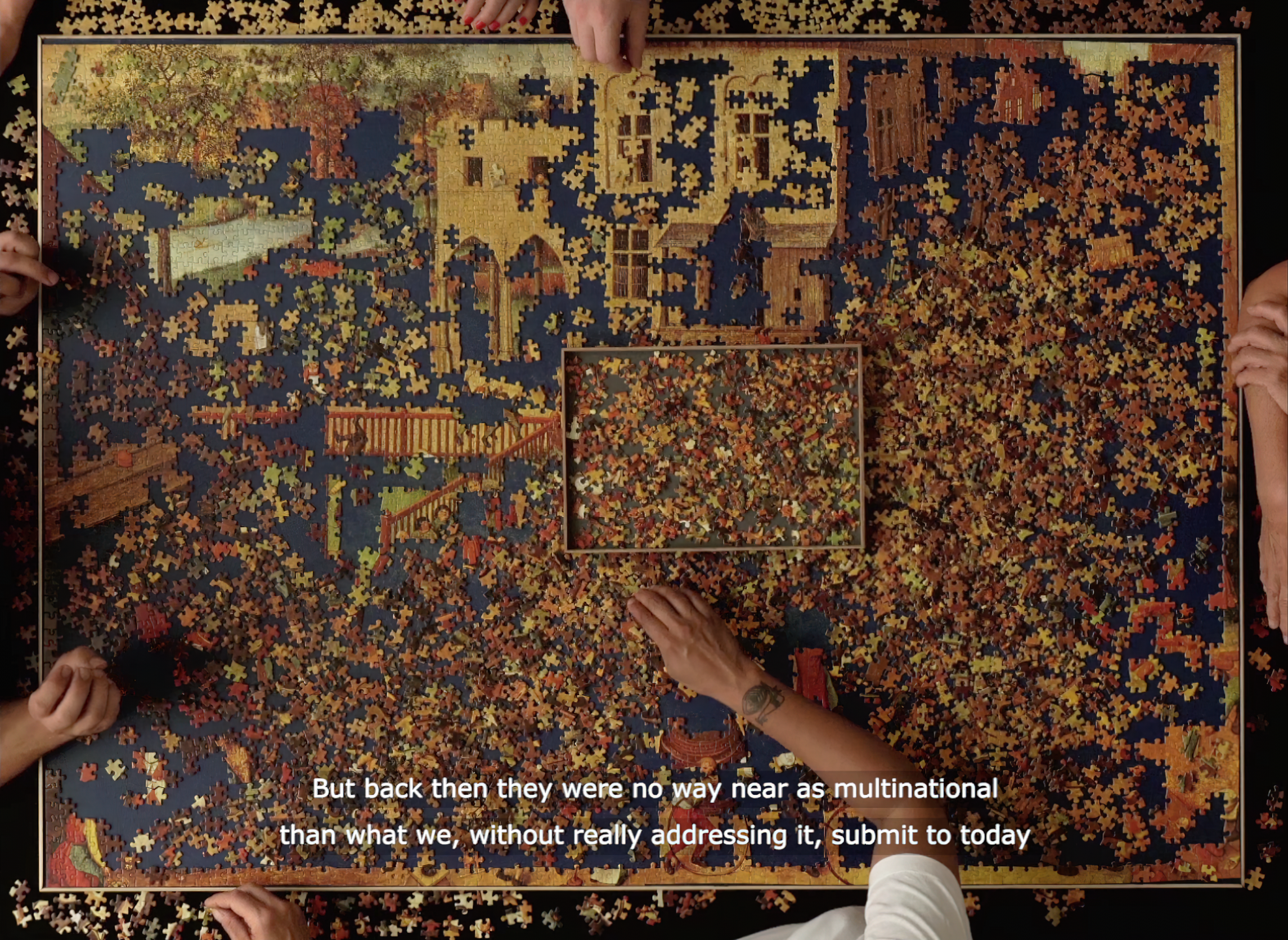Working through the puzzle game.
PATREON-EXCLUSIVE CONTENT
〰️
PATREON-EXCLUSIVE CONTENT 〰️
In his unique exploration of the intersection of play, community, and knowledge production, Søren Thilo Funder and Tina Helen aka FACTORY WORKERS UNITED document the playful assemblage of a 4000-piece jigsaw puzzle inspired by Pieter Bruegel the Elder's iconic painting Children's Games (1560). Titled Children's Games (Puzzled) (2019), this immersive video captures the artists and a diverse group of collaborators, adults and children, gathering around the seemingly mundane activity of piecing together a puzzle. Filmed from a bird's-eye view, the slow and deliberate process of (re)constructing the image from a myriad of fragments becomes a site for rich conversation and collective reflection.
The choice is not random: with Children's Games (1560), Pieter Bruegel the Elder offers a kaleidoscopic vision of childhood play, filled with an astonishing array of activities and characters. Yet, beneath the surface of this charming and whimsical scene lies a darker undertone. The chaotic jumble of bodies and games seems to suggest a world in which innocence and joy are constantly under threat from the violence and disorder that lurks just out of sight. Despite the painting's undeniable technical mastery and richly detailed composition, it is this underlying tension between play and danger that makes Children's Games such a powerful and enduring work of art. Bruegel's vision of childhood, with all its contradictions and complexities, remains as relevant and provocative today as it was when it was first painted over four centuries ago.
Matteo Bittanti
This is a Patreon exclusive article. To access the full content consider joining our Patreon community.


